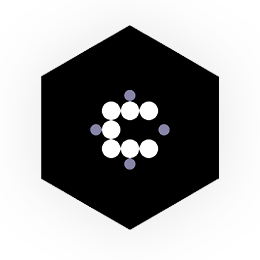Using personal workflow tools to capture ideas and thoughts on the go for later input and analysis for journal entries and content creation. The initial idea for this is from a decade long use of online writing, bookmarking, and notetaking tools across many platforms and devices with the aim to collate and simplify the analysis and production of words.
Prompt: Create an ALO for the concept of Digital Journal that contains all the creators inputs and thoughts, including bookmarks, writings, and transcripts of conversations, stored in a DB that can be accessed with GPT
ALO: Digital Journal
Core Objective: To create a comprehensive digital repository that captures and organizes all the creator's inputs, thoughts, bookmarks, writings, and conversation transcripts, stored in a database accessible via GPT for seamless retrieval and interaction.
Sub-Objects and Their Capabilities
- Input Capture and Organization:
- Bookmark Manager:
- Function: Captures and organizes all web bookmarks.
- Capabilities: Tags, categorizes, and timestamps bookmarks for easy retrieval.
- Writing Archive:
- Function: Stores all writings, including drafts and final pieces.
- Capabilities: Organizes by date, theme, and relevance; allows for version control and annotation.
- Conversation Transcriber:
- Function: Records and transcribes all spoken or written conversations.
- Capabilities: Converts audio to text, timestamps, and indexes conversations by keywords and participants.
- Bookmark Manager:
- Database Management:
- Storage and Retrieval Engine:
- Function: Manages the underlying database that stores all inputs.
- Capabilities: Ensures efficient storage, indexing, and retrieval of data; supports complex queries and fast access times.
- Storage and Retrieval Engine:
- User Interface and Interaction:
- Dashboard Interface:
- Function: Provides a user-friendly interface for accessing and interacting with the digital journal.
- Capabilities: Customizable dashboard, search functionality, and visual representations of data (e.g., timelines, graphs).
- GPT Integration:
- Function: Facilitates natural language interaction with the database.
- Capabilities: Allows users to query, retrieve, and analyze information using GPT, including summarization, trend analysis, and content generation.
- Dashboard Interface:
Foundational State
- Initialization: The digital journal starts with a foundational setup, where the user configures categories, tags, and basic organizational structure.
- Data Ingestion: Initial data import, including bookmarks, writings, and any available conversation transcripts.
Dynamic Interaction and Evolution
- Contextual Understanding:
- The Digital Journal adapts to evolving user needs, recognizing patterns in how the user interacts with and organizes their data.
- Adaptive Learning:
- Learns from user inputs and interactions to improve organization and retrieval processes, ensuring the most relevant and useful information is readily accessible.
- Content Enrichment:
- Continuously enriches stored data by linking related pieces of information, identifying themes, and providing contextual insights.
Managing Entity
- User-Centric Management:
- Oversees and coordinates the interaction between sub-objects, ensuring the digital journal remains aligned with the user’s objectives and preferences.
- Feedback Integration:
- Incorporates user feedback to refine and enhance the system, maintaining coherence and balance across all functions.
The Digital Journal
I have used an online CMS Database to create a personal content automation workflow to capture journal entries though mobile app and voice capture text. This enables quick capture and publishing it to the WWW.
Depending on the sensitivity of the information you convey, capture, and publish you can set the privacy level of the content based on your specific workflow and CMS functionality.
I use the Database as a reference doc with working with GPT to draw a broad wholistic analysis of the content and to guide content creation from there as a starting point.
Application and Benefits
- Comprehensive Record Keeping:
- Provides a centralized repository for all creator inputs, enabling easy access and reference.
- Enhanced Productivity:
- Streamlines the process of capturing, storing, and retrieving information, saving time and reducing cognitive load.
- Informed Decision-Making:
- Leverages the power of GPT to analyze and synthesize information, aiding in more informed and strategic decisions.
- Personal Growth and Development:
- Supports continuous learning and personal development by maintaining a rich, organized history of thoughts, ideas, and conversations.
This Digital Journal ALO ensures that all inputs are effectively captured, organized, and accessible, leveraging advanced language processing capabilities to enhance the user’s ability to interact with their stored data dynamically.




